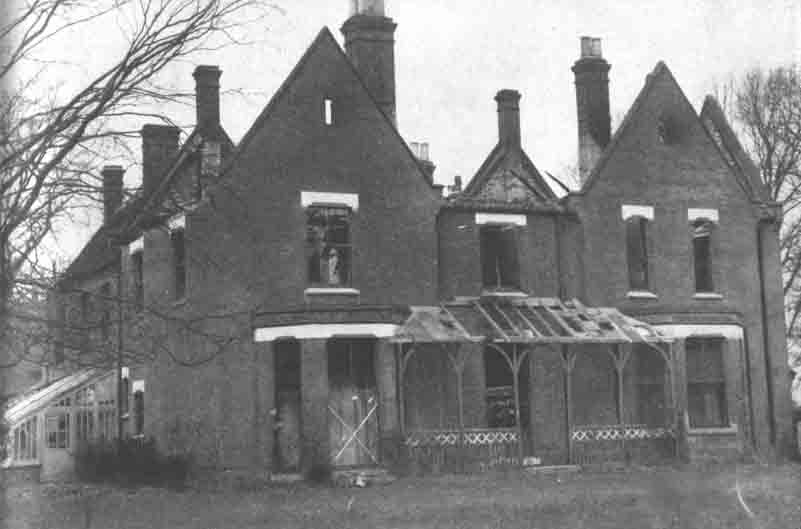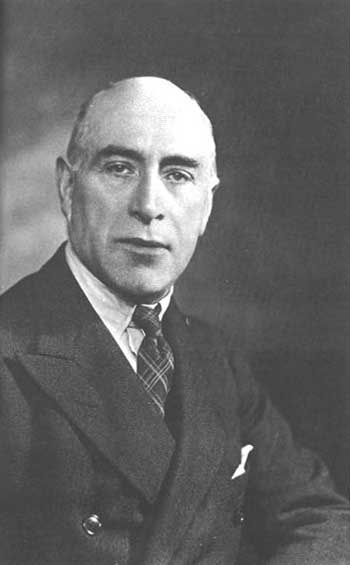 Submitted by Constantine on
Submitted by Constantine on

When I was a kid, the story of the Borley Rectory scared the daylights out me. Enjoy the tale.
By Troy Taylor
http://www.prairieghosts.com/brectory.html
The most famous case in the career of Harry Price was undoubtedly that of Borley Rectory, a deteriorating house in Essex. The tiny parish of Borley is located in a desolate, sparsely populated area near the east coast of England, near the Suffolk border. It is a lonely place and would be largely forgotten if not for the fact that it is the location of what came to be known as “The Most Haunted House in England”.
Harry Price got involved in the case after a newspaper carried a story about a phantom nun at the house in June 1929. Price was asked by the paper to investigate and he was told about various types of phenomena that had been reported there, like phantom footsteps; strange lights; ghostly whispers; a headless man; a girl in white; the sounds of a phantom coach outside; the apparition of the home’s builder, Henry Bull; and of course, the spirit of the nun. This spectral figure was said to drift through the garden with her head bent in sorrow.

Local legend had it that a monastery had once been located on the site and that a 13th century monk and a beautiful young novice were killed while trying to elope from the place. The monk was hanged and his would-be bride was bricked up alive within the walls of her convent. Price scoffed at the idea of such a romantic tale but was intrigued by the phenomena associated with the house.
It would be during his investigations of Borley Rectory that he would become the best-known and most accomplished of the early ghost hunters, setting the standard for those who would follow. Price coined the idea of the “ghost hunter’s kit”; used tape measurers to check the thickness of walls and to search for hidden chambers; perfected the use of still cameras for indoor and outdoor photography; brought in a remote-control motion picture camera; put to use a finger-printing kit; and even used portable telephones for contact between investigators.
Many of Price’s accounts from Borley would be first-hand, as he claimed to see and hear much of the reported phenomena like hearing bells ring, rapping noises and seeing objects that has been moved from one place to another. In addition, he also collected accounts from scores of witnesses and previous tenants of the house, even talking to neighbors and local people who had their own experiences with the rectory.
Even the original tenants of the house, the Rev. Henry Bull family had encountered the spirits. He had become pastor of Borley Church in 1862 and despite local warnings, had built the rectory on a site believed by locals to be haunted. Over the years, Bull’s servants and his daughters were repeatedly unnerved by phantom rappings, unexplained footsteps and the appearance of ghosts. Reverend Bull seemed to regard these events as splendid entertainment and he and his son, Harry, even constructed a summer house on the property where they could enjoy after-dinner cigars and watch for the appearance of the phantom nun who walked nearby.
Harry Bull inherited the rectory and the job as parson when his father died in 1892 and stayed on until his death in 1927. However, Bull’s successor, Rev. Guy Smith, quit the rectory just one year after moving in, plagued by both the ghosts and the house’s deteriorating state.
Until that point, the ghosts at the rectory had been relatively peaceful, but all that would change in October 1930 when Smith was replaced by the Reverend Lionel Foyster and his wife, Marianne. Their time in the house would see a marked increase in the paranormal activity. People were locked out of rooms, household items vanished, windows were broken, furniture was moved, odd sounds were heard and much more.
However, the worst of the incidents seemed to involve Mrs. Foyster, as she was thrown from her bed at night, slapped by invisible hands, forced to dodge heavy objects which flew at her day and night, and was once almost suffocated with a mattress.
He believed the writings had come from another young woman, one who seemed to be from her references, a Catholic. These clues would later fit well into Price’s theory that the Borley mystery was a terrible tale of murder and betrayal in which the central character was a young nun, although not the one of legend.
The Foysters moved out of the house in 1935 and with the place now empty, Price leased the house for an extended, round-the-clock, one year investigation. He ran an advertisement in the personal column of the Times on May 25, 1937 looking for open-minded researchers to literally “camp out” at the rectory and record any phenomena which took place in their presence. The advertisement read:
“HAUNTED HOUSE: Responsible persons of leisure and intelligence, intrepid, critical, and unbiased, are invited to join rota of observers in a years night and day investigation of alleged haunted house in Home counties. Printed Instructions supplied. Scientific training or ability to operate simple instruments an advantage. House situated in lonely hamlet, so own car is essential. Write Box H.989, The Times, E.C.4”
Price was deluged with potential applicants, most of whom were unsuitable. After choosing more than 40 people, he then printed the first-ever handbook on how to conduct a paranormal investigation. A copy was given to each investigator and it explained what to do when investigating the house, along with what equipment they would need.
During the investigations, the researchers were allowed a wide latitude when it came to searching for facts. Some of them employed their own equipment, others kept precise journals and others turned to séances, which would prove interesting over the period of 1935 to 1939.
During the year that Price leased the rectory, breakthroughs were made in the communications with the spirits. One séance would later give Price the material that he needed to solve (he believed) the mystery of the haunting.
During a sitting with a planchette, an alleged spirit named Marie Lairre related that she had been a nun in France but had left her convent to marry Henry Waldegrave, a member of a wealthy family whose manor home once stood on the site of Borley Rectory. There, her husband had strangled her and had buried her remains in the cellar.
The story went well with the most interesting of the Borley phenomena, namely the reported phantom nun and the written messages. Price theorized that the former nun had been buried in unconsecrated ground and was now doomed to haunt the property seeking rest.
In March of 1938, five months after Marie’s first appearance, another spirit promised that the rectory would burn down that night and that the proof of the nun’s murder would be found in the ruins. Borley Rectory did not burn that night, but exactly 11 months later, a new owner, Captain WH Gregson was unpacking books in the library when an oil lamp overturned and started a fire. The blaze quickly spread and the rectory was gutted.
Price took this opportunity to excavate in the cellar of the house and discovered a few fragile bones which turned out to be that of a young woman.... evidence, Price concluded, there was something to the story of the murdered nun. A Christian burial for the bones appeared to provide the ghost with the rest she had long sought and a service was later conducted by the Rev. AC Henning in the small village of Liston, less than two miles from the rectory.
The building itself was finally demolished in 1944. However, its legacy still continues today and it retains its reputation as one of the world's most famous haunted houses!
Price wrote about Borley Rectory in two books entitled The Most Haunted House In England (1940) and The End of Borley Rectory (1946).